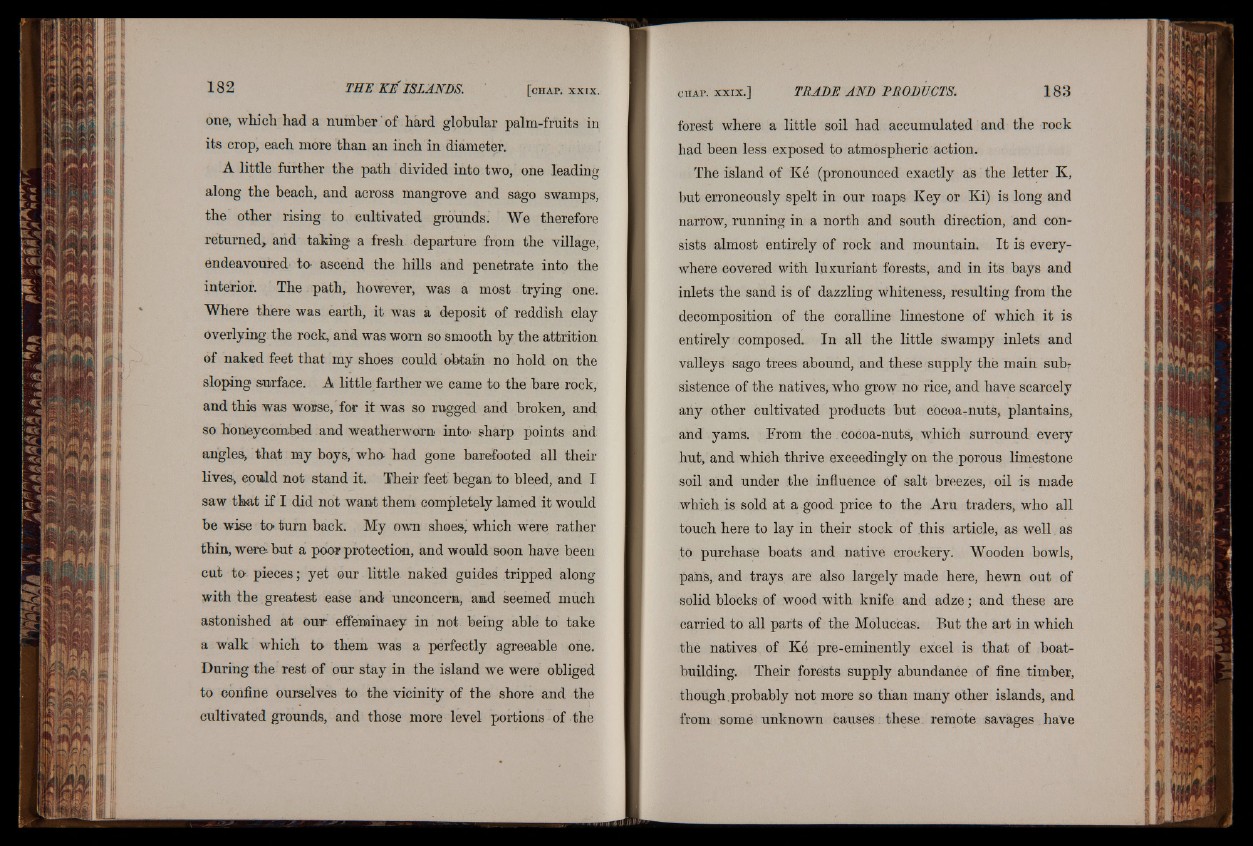
one, which had a number of hard globular palm-fruits in
its crop, each more than an inch in diameter.
A little further the path divided into two, one leading
along the beach, and across mangrove and sago swamps,
the other rising to cultivated grounds. We therefore
returned* and taking a fresh departure from the village,
endeavoured to- ascend the hills and penetrate into the
interior. The path* however, was a most trying one.
Where there was earth, it was a deposit of reddish clay
overlying the rock, and was worn so smooth by the attrition
of naked feet that my shoes could obtain no hold on the
sloping surface. A little farther we came to the hare rock,
and this was worse, for it was so rugged and broken, and
so honeycombed and weatherworn into sharp points and
angles, that my boys, who* had gone barefooted all their
lives, could not stand it. Their feet began to bleed, and I
saw that if I did not want them completely lamed it would
be wise to turn back. My own shoes, which were rather
thin, were--but a poor protection, and would soon have been
cut to* pieces; yet our little naked guides tripped along
with the greatest ease and unconcern, and seemed much
astonished at our- effeminacy in not being able to take
a walk which to them was a perfectly agreeable one.
During the rest of our stay in the island we were obliged
to confine ourselves to the vicinity of the shore and the
cultivated grounds, and those more level portions of the
forest where a little soil had accumulated and the rock
had been less exposed to atmospheric action.
The island of Ké (pronounced exactly as the letter K,
but erroneously spelt in our maps Key or Ki) is long and
narrow, running in a north and south direction, and consists
almost entirely of rock and mountain. It is everywhere
covered with luxuriant forests, and in its bays and
inlets the sand is of dazzling whiteness, resulting from the
decomposition of the coralline limestone of which it is
entirely composed. In all the little swampy inlets and
valleys sago trees abound, and these supply thè main sub?
sistence of the natives, who grow no rice, and have scarcely
any other cultivated products but cocoa-nuts, plantains,
and yams. From th e . cocoa-nuts, which surround every
hut, and which thrive exceedingly on the porous limestone
soil and under the influence of salt breezes, oil is made
which is sold at a good price to the Aru traders, who all
touch here to lay in their stock of .this article, as well as
to purchase boats and native crockery. Wooden bowls,
pans, and trays are also largely made here, hewn out of
solid blocks of wood with knife and adze ; and these are
carried to all parts of the Moluccas. But the art in which
the natives of Ké pre-eminently excel is that of boatbuilding.
Their forests supply abundance of fine timber,
though.probably not more so than many other islands, and
from some unknown causes : these; remote savages have